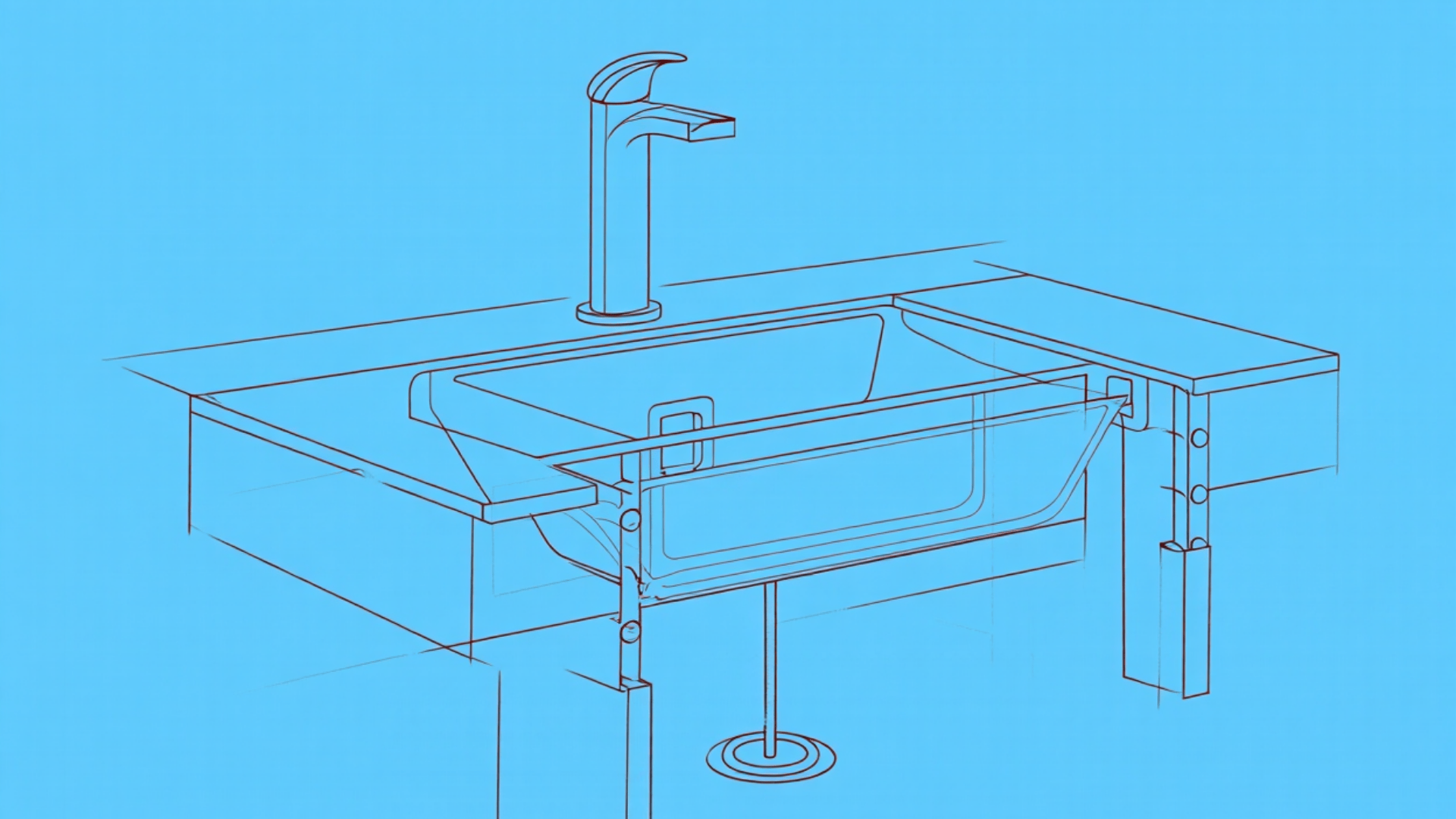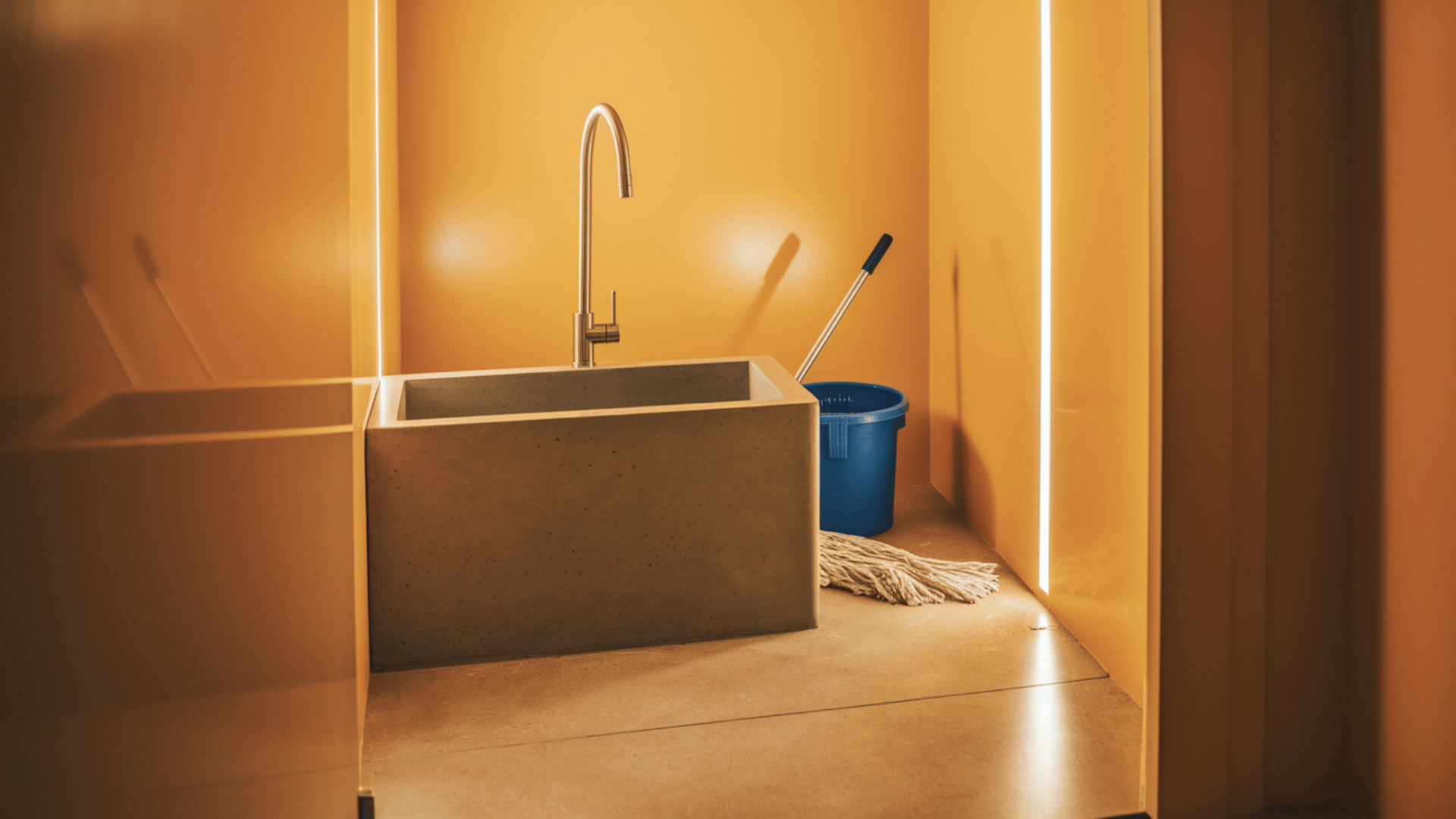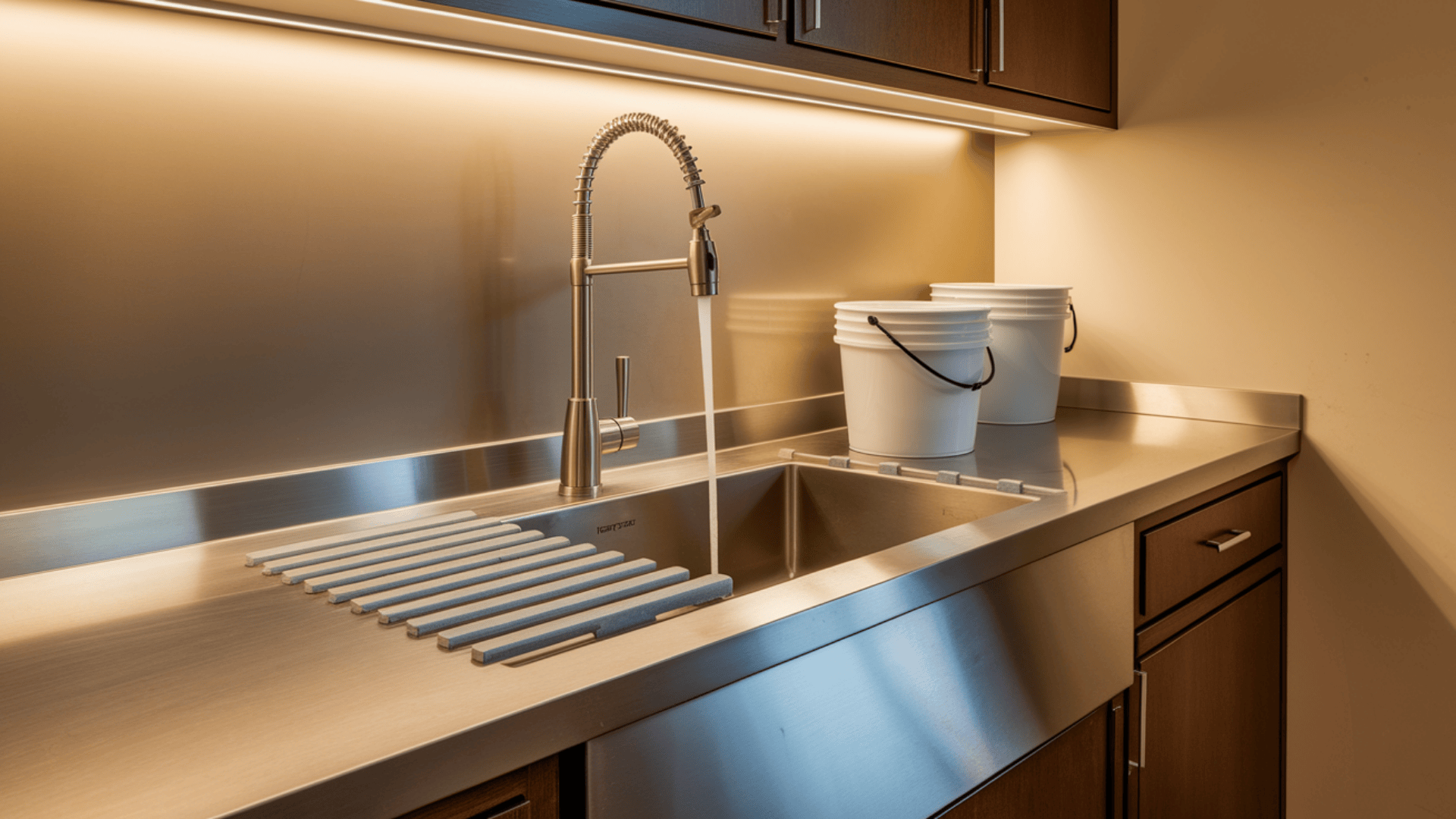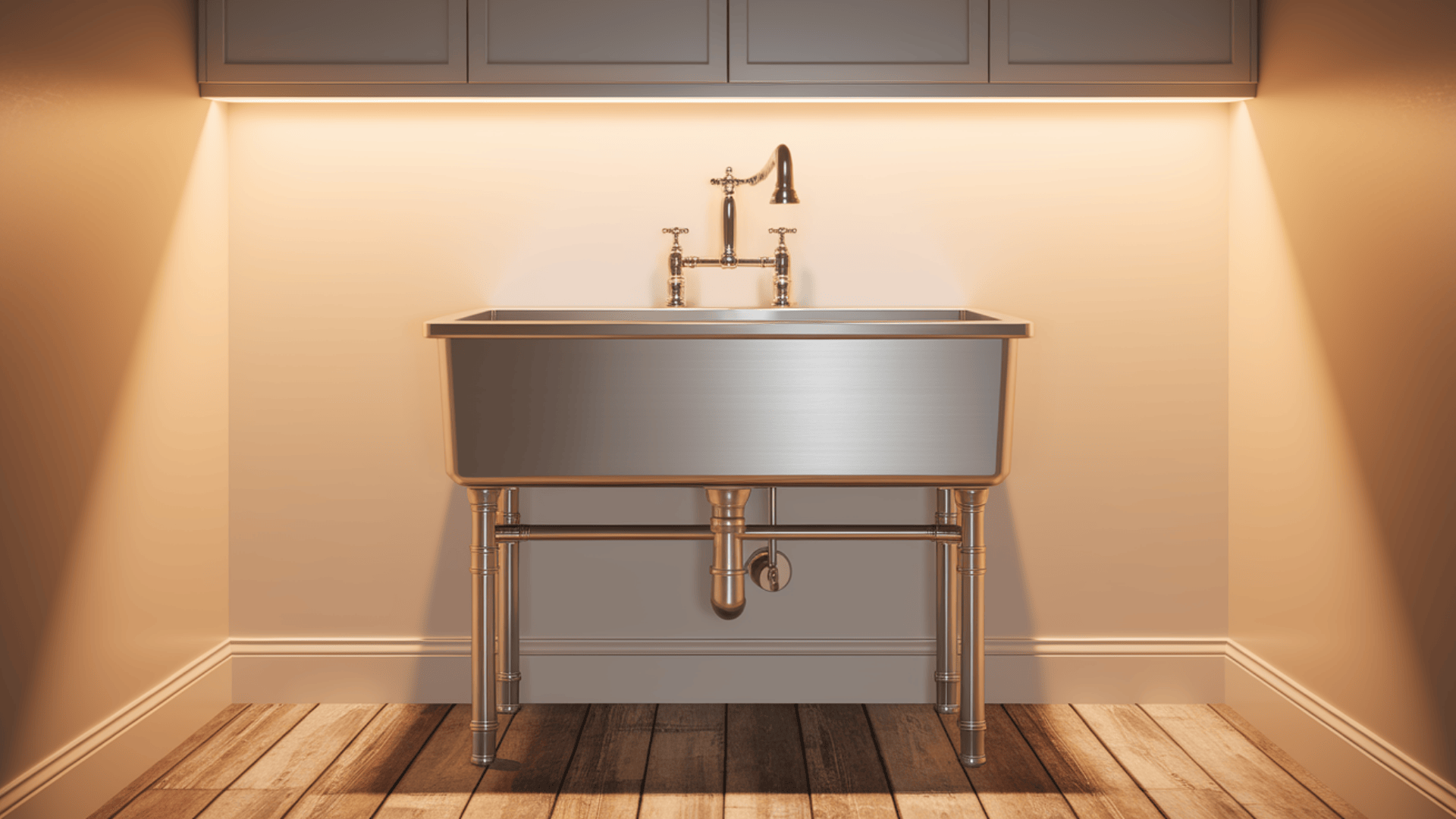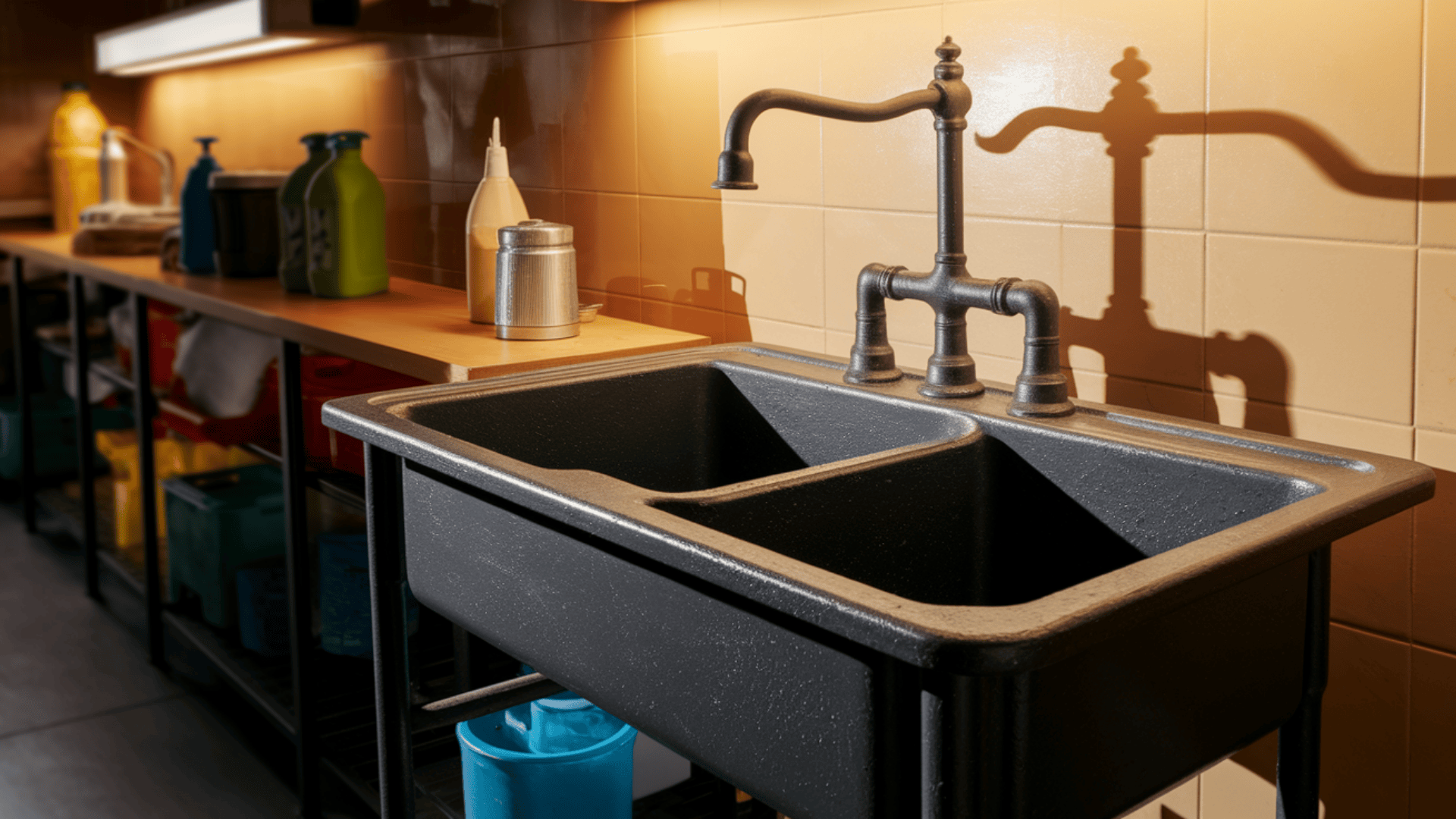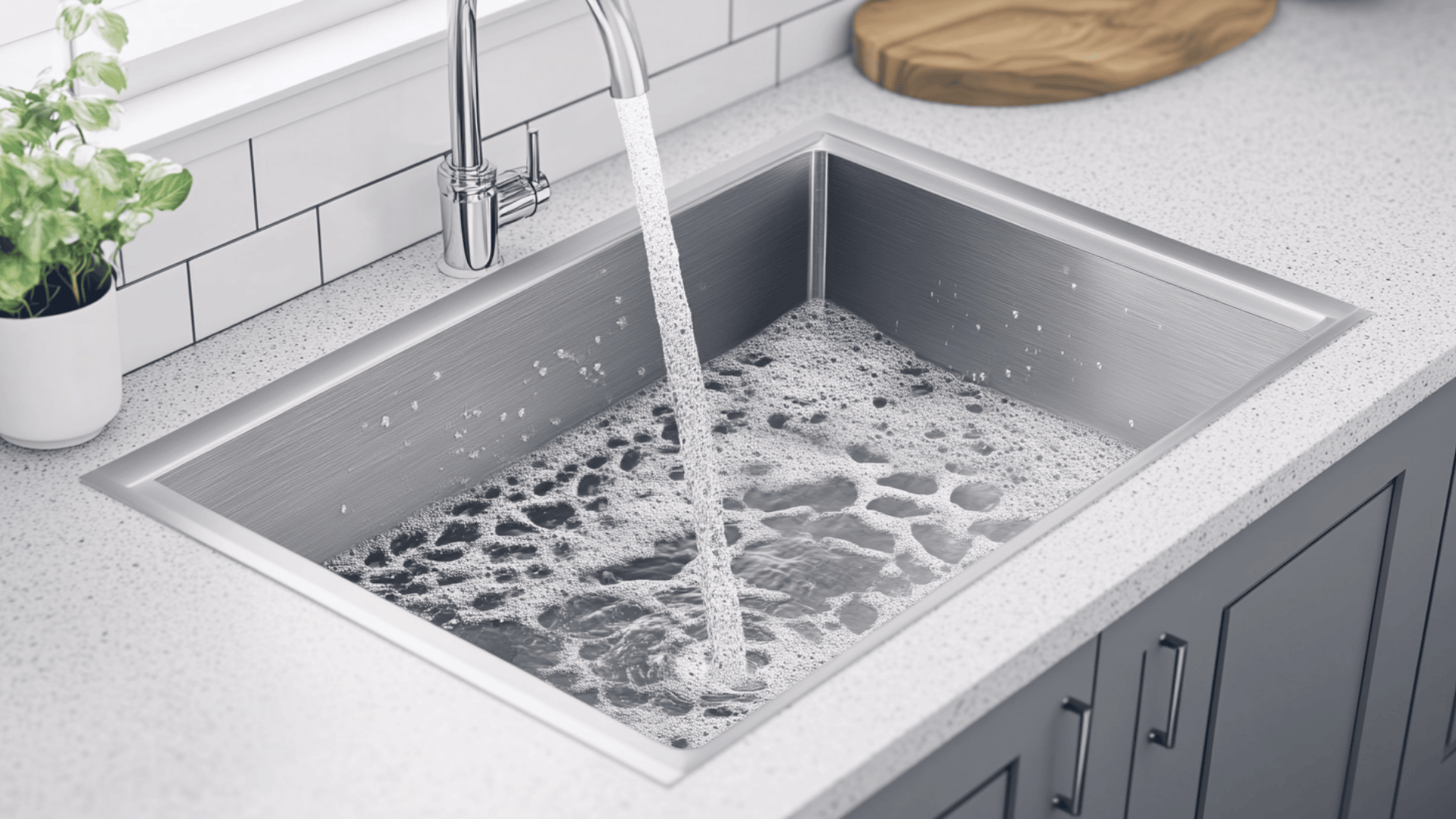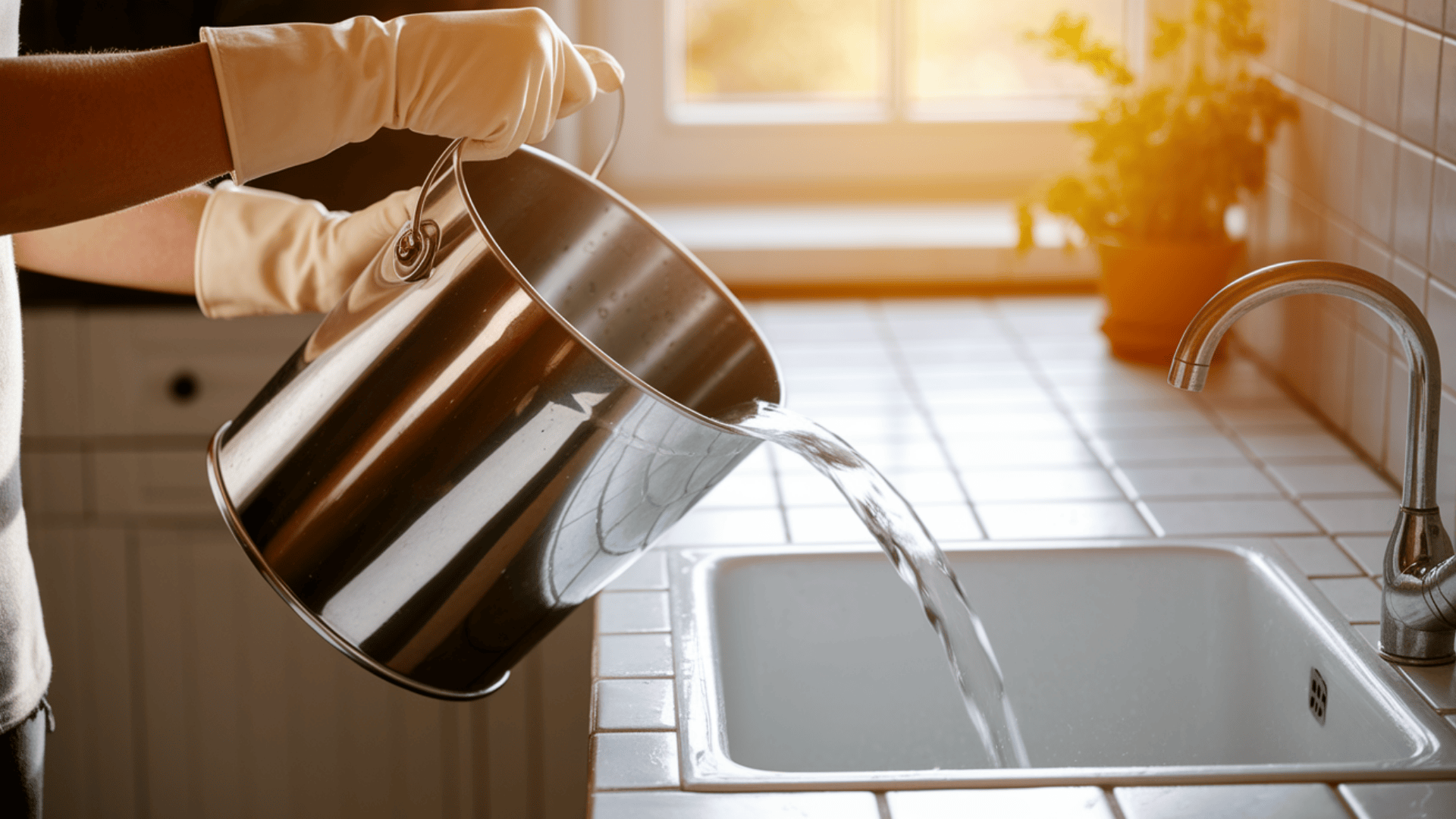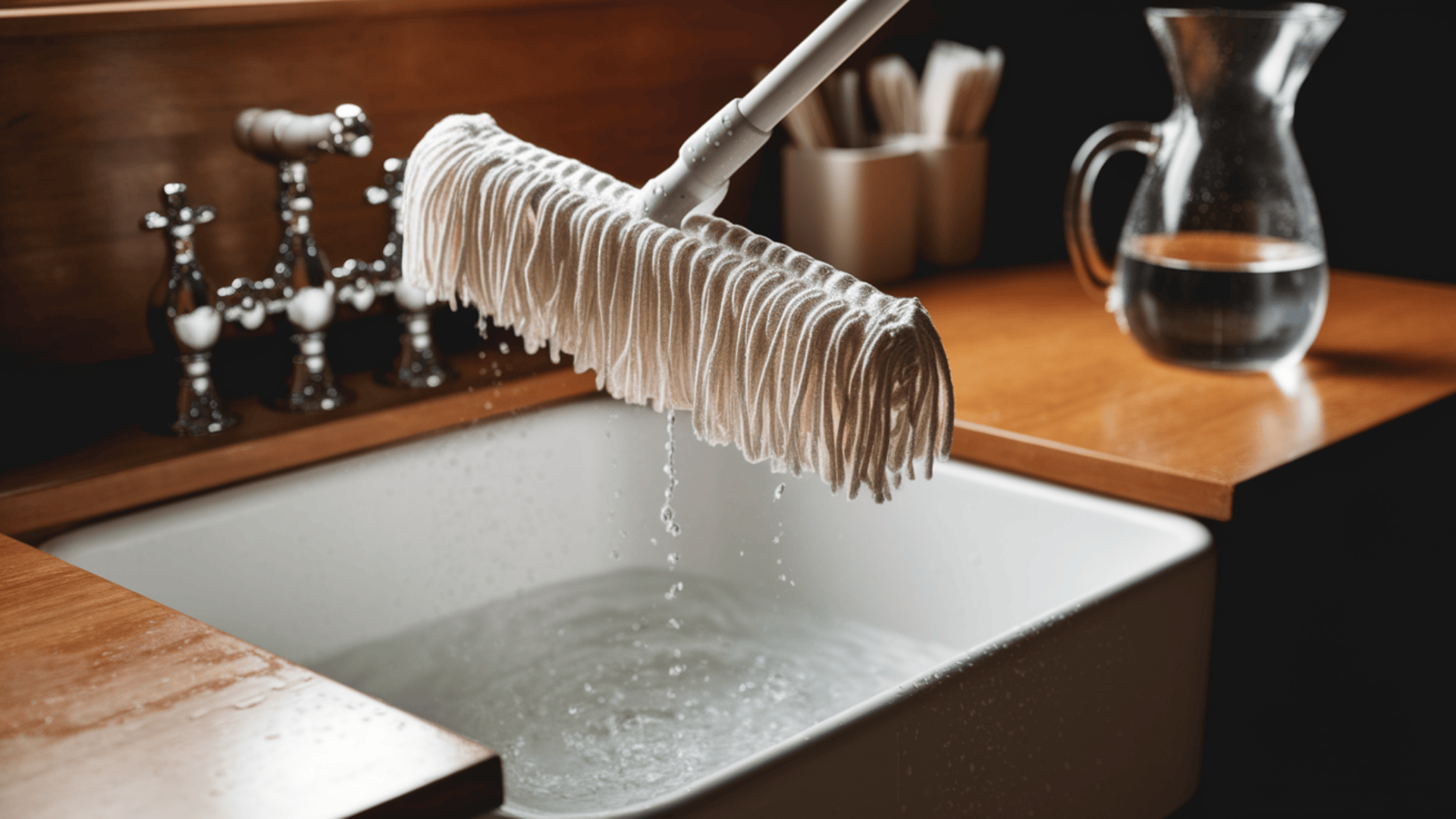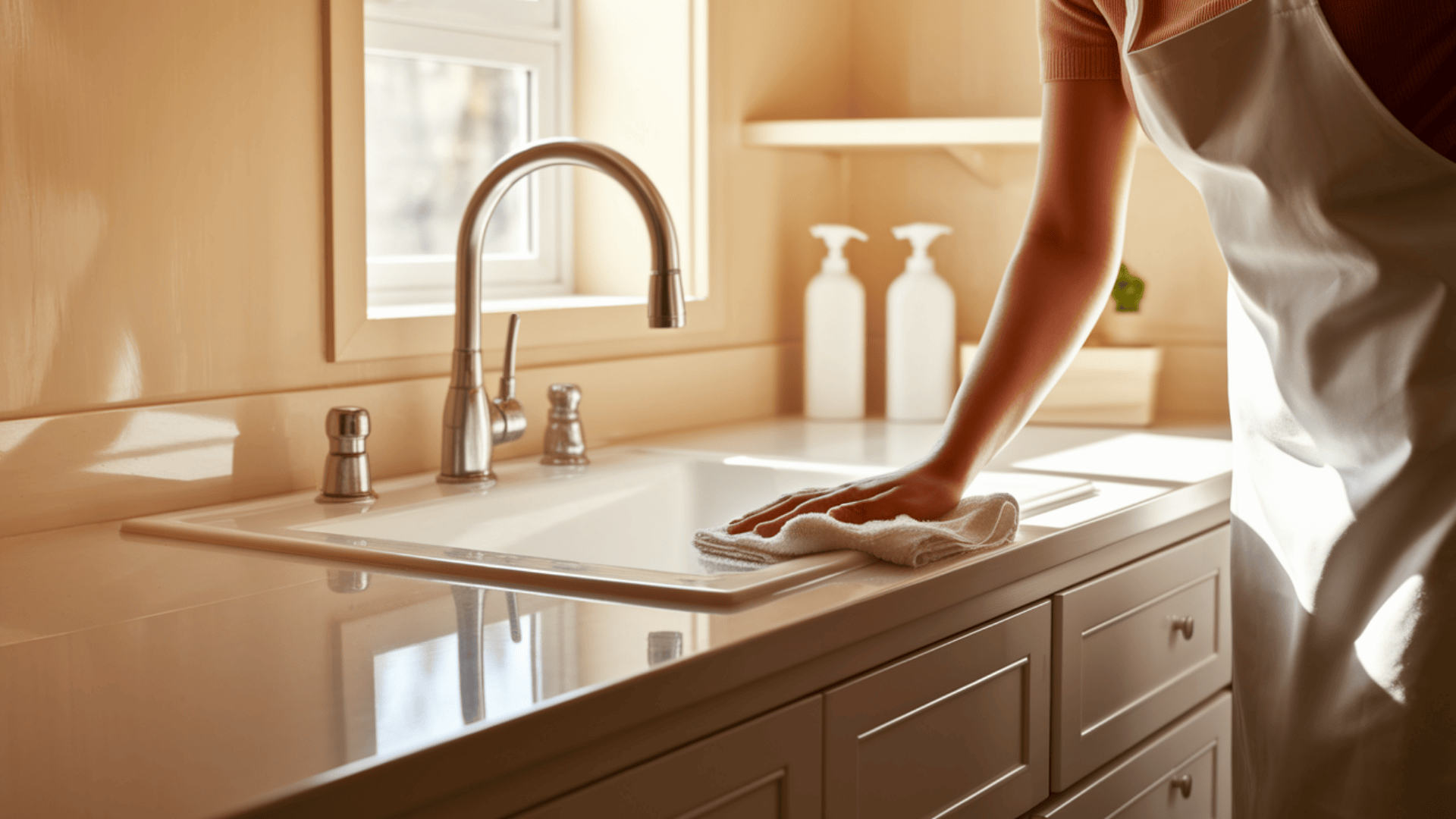Ever wondered where to pour that dirty mop water after cleaning your floors? Using the wrong sink can lead to plumbing nightmares, unpleasant odors, and even health hazards.
Most regular sinks aren’t built to handle the grime, debris, and cleaning chemicals that come with floor cleaning.
Finding the right sink for disposing of mop water isn’t just about convenience—it’s about protecting your plumbing system and maintaining proper hygiene standards.
From dedicated mop sinks in commercial buildings to practical utility sinks in homes, the options serve different needs but share one purpose: safely managing dirty cleaning water.
Let’s explore the best sink options for disposing of mop water and how they help keep your cleaning routine running smoothly.
Why You Need a Dedicated Sink for Mop Water?
Cleaning floors is a task that requires the right tools and proper disposal methods. If you’ve ever cleaned with a mop, you may have wondered where to dispose of the dirty water when you’re done.
Most cleaning professionals recommend against using regular kitchen or bathroom sinks for this purpose. These everyday fixtures aren’t designed to handle the debris, chemicals, and volume of water that comes with mopping.
Using the wrong disposal method can lead to plumbing issues, sanitation concerns, and even damage to your regular fixtures over time. Finding the right spot to dump mop water is an often-overlooked but crucial part of an effective cleaning routine.
The choice you make affects not just cleanliness but also the longevity of your plumbing system and the health standards of your space.
Three Main Options for Mop Water Disposal
Let’s look at the main sink types used for this purpose:
- Service Sink – A heavy-duty option found in commercial buildings
- Mop Sink – Built low to the ground with splash guards
- Utility Sink – A larger basin option for homes and small businesses
The choice between these depends on your setting, how often you clean, and the size of the area you maintain.
Why It Matters Where You Dump Mop Water
Using the right sink does more than keep things tidy:
- Stops nasty clogs in pipes not built for dirt and grime
- Keeps food prep areas clean and safe from floor germs
- Makes cleaning easier with proper height and splash protection
- Follows health rules in commercial and public buildings
Think about what happens when you dump dirty floor water down a kitchen or bathroom sink – it’s not a pretty picture! The right cleaning sink can make your job much simpler and your building much cleaner.
In the next sections, we’ll look at each type of sink in detail so you can pick the best option for your needs.
Service Sinks: The Professional Choice for Mop Water
Service sinks stand out as the top choice for mop water disposal in homes, offices, and commercial spaces. Their practical design tackles the messy job of getting rid of dirty cleaning water better than standard kitchen or bathroom sinks.
Built Tough for Dirty Jobs
Service sinks come with several key features that make them perfect for mop water. Made from strong materials like thick stainless steel or hard plastic that won’t crack or chip, they can withstand years of heavy use.
Much bigger and deeper than regular sinks, with plenty of room for large mop buckets, they accommodate the volume needed for floor cleaning tasks.
Many service sinks are placed at floor level, making it easy to pour from heavy buckets without lifting them high. This thoughtful design helps prevent the common problems of clogs, spills, and wear that come from using regular sinks for cleaning tasks.
Smart Design Features
What truly sets these sinks apart is their practical functionality:
- Built-in filters catch hair, dirt, and other debris before it goes down the drain
- High faucets provide ample room to fill and rinse large buckets
- Deep basins contain splashes and protect the surrounding areas
- Wider drains handle small bits of dirt without clogging like standard sinks
These practical features make cleaning up after mopping much faster and more straightforward, with less mess to deal with afterward.
Types of Sinks for Dumping Mop Water
When it comes to getting rid of dirty mop water, you have several options. Each type of sink has its own strengths depending on your needs and space.
1. Mop Sink
Mop sinks are built specifically for cleaning tasks in business settings like schools, hospitals, and office buildings. Usually made of strong cement or thick plastic that can take heavy use, they’re designed to withstand constant cleaning tasks.
Most are set into the floor for easy bucket emptying with no lifting required, reducing strain on cleaning staff. The high sides effectively stop splashing on walls and floors, keeping the surrounding area clean.
2. Service Sink
These workhorses handle the toughest cleaning jobs without complaint. Typically bigger and deeper than standard kitchen sinks, they provide ample space for cleaning tools and buckets. Their construction from strong, long-lasting materials resists stains and damage from cleaning chemicals and dirty water.
Wall guards protect surrounding surfaces from water damage, while the reinforced edges withstand impact from heavy buckets. The extra-wide drains provide better flow for quick emptying, and faucets are positioned for easy bucket filling.
3. Utility Sink
For homes and smaller businesses, a utility sink offers a good middle-ground option. These versatile fixtures serve multiple purposes beyond just mop water disposal.
- Larger basin handles bigger cleaning tools and buckets
- Durable materials withstand cleaning chemicals and rough use
- Flexible installation – can be free-standing or wall-mounted
- Available with single or double basins for different needs
The utility sink serves as a jack-of-all-trades option that works well for most household cleaning needs without requiring dedicated space.
4. Slop Sink
This heavy-duty option excels at handling large amounts of water quickly. Its extra deep basin contains splashes effectively, while the strong build quality stands up to rough, daily use. You’ll often find these in janitor’s closets and maintenance areas of larger buildings.
The fast drainage system handles high water volume without backing up, making it ideal for places with lots of floor space to clean daily.
Key Factors to Consider When Choosing a Mop Water Sink
Picking the right sink for mop water makes cleaning easier and helps avoid plumbing problems. Here’s what to think about before making your choice.
1. Size and Capacity
The basin’s dimensions matter more than you might think. Look for a sink at least 22-25 inches wide and 20-22 inches deep to accommodate standard mop buckets.
Make sure the basin is big enough to fit your mop bucket completely, allowing enough room to empty it without splashing.
Consider the total water volume the sink can hold at once, especially if you clean large areas. Bigger is usually better when it comes to handling mop water, as it allows more room to work and less chance of overflow.
2. Material Durability
When selecting a sink for mop water disposal, the material it’s made from will significantly impact its performance and lifespan. Different materials offer varying levels of durability, weight, and resistance to cleaning chemicals.
| MATERIAL | PROS | CONS |
|---|---|---|
| Stainless Steel | Rust-resistant, easy to clean | Can dent, more expensive |
| Cast Iron | Extremely durable, long-lasting | Heavy, can chip over time |
| Composite | Lightweight, affordable | Less durable than metal options |
| Concrete | Nearly indestructible | Very heavy, porous if not sealed |
Choose materials based on how often you’ll use the sink and how tough your cleaning jobs tend to be.
3. Drainage Efficiency
Good drainage prevents standing water and potential sink damage. Sinks with sloped bottoms direct water to the drain more quickly, while wider drain openings (3-4 inches) handle small debris without clogging.
Look for smooth interior surfaces that don’t trap dirt or slow water flow. Fast, complete drainage keeps the sink clean and ready for the next use while preventing odors.
Step-by-Step Guide to Properly Dump Mop Water
Following a good process when dumping mop water keeps your sink in good shape and makes cleanup faster. Take a moment to check that the sink is clear of tools or other items that might get in the way before you begin.
Here’s how to do it right:
Step 1: Get Your Bucket Ready
Position your bucket near the sink and remove any large debris like paper or food scraps by hand (wearing gloves).
Step 2: Choose the Right Dumping Angle
Pour slowly at first, then increase speed as you confirm the water is going where it should. Hold the bucket from the bottom and side for better control.
Step 3: Rinse Thoroughly After Dumping
Rinse both the mop and bucket with clean water. For the bucket, add a small amount of clean water, swish it around, and dump again to remove residue.
Step 4: Clean the Sink After Use
Wipe down the sink basin and surrounding area with a clean cloth to remove any splashes or residue. This prevents odors and keeps the area sanitary.
Tips for Efficient Use of Service Sinks
Making the Most of Your Service Sink Can Save Time and Effort While Improving Cleaning Results. These Practical Tips Will Help You Work More Efficiently.
1. Keep Supplies Handy
Setting up a system around your sink makes cleaning tasks flow better. Consider creating a caddy with cleaning fluids, brushes, and cloths that stays near the sink. This means less running back and forth for supplies.
Some cleaning pros install simple shelving above or beside the sink to keep everything within arm’s reach. Having all your tools in one place makes the job faster and more likely to be done right.
2. Protection Practices
Wearing rubber gloves isn’t just about keeping your hands dry; it protects your skin from harsh cleaning chemicals and hot water. Choose thick, elbow-length options for better coverage when working with dirty mop water.
Splash protection matters too. If your sink doesn’t have built-in guards, consider adding a simple plastic shield to prevent wall damage. These small protective measures save money on repairs and repainting later.
3. Smart Pouring Techniques
For better control when dumping larger buckets, try this method:
- Place one hand under the bucket’s bottom
- Use your other hand to grip the side
- Tilt slowly, starting with just a trickle
- Gradually increase the flow as you confirm it’s going into the drain
This controlled approach prevents the common problem of water surging out too quickly and splashing everywhere.
The Bottom Line
The right sink for dumping mop water makes all the difference in your cleaning routine. Mop sinks, service sinks, and utility sinks each offer distinct benefits tailored to your specific space and needs.
These purpose-built options prevent clogs, protect your plumbing, and maintain proper sanitation. Remember to consider size, durability, drainage efficiency, and location when choosing your ideal sink.
By following proper dumping techniques and maintaining your sink regularly, you’ll extend its life and keep your cleaning area sanitary.
A dedicated cleaning sink might seem like a small detail, but it’s one that professional cleaners never overlook—because they know it’s the foundation of an effective, trouble-free cleaning system.
Tired of the mess and hassle after mopping? Find out which sink will make dumping mop water a breeze and transform your cleaning routine today! Trust us, your back (and floors) will thank you!
Frequently Asked Questions (FAQs)
What is a Mop Sink, and Why is it Ideal for Dumping Mop Water?
A mop sink is a floor-level basin specifically designed for cleaning purposes, particularly for disposing of dirty mop water. It’s ideal because of its large, deep basin, durable construction, and practical features like splash guards and raised edges.
Can I Use a Regular Sink to Dump Mop Water?
Using a regular kitchen or bathroom sink for mop water is not recommended. Regular sinks have narrower drains that can clog with floor dirt and debris, potentially causing plumbing issues.
What Size is Suitable for Dumping Mop Water?
For effective mop water disposal, look for a sink with a basin at least 20-24 inches wide and 20 inches deep. The sink should be large enough to fit your mop bucket completely to prevent splashing.
Where Should a Mop Sink Be Installed?
In commercial buildings, mop sinks are typically found in dedicated janitorial closets, while homes might have them in garages, basements, or laundry rooms.


